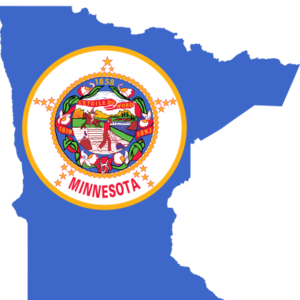Minn. celebrates 17 years since biodiesel mandate was enacted




March 15, 2019
BY Ron Kotrba
March 15, 2002, was a landmark day for biodiesel. Seventeen years ago, Minnesota enacted the nation’s first biodiesel mandate, which went into effect in 2005. The trailblazing blend requirement started at 2 percent and was bumped up to 5 percent in 2009.
In 2008, then Gov. Tim Pawlenty signed a bill even further boosting the mandate to B10 and then ultimately B20 for the warmer months of April through September. For the colder months of October through March, the mandate would roll back to B5.
While the B10 and B20 mandates were delayed—the jump to B10 was supposed to happen in 2012 and B20 in 2015—they ultimately went into effect in 2014 and 2018, respectively, once statewide blending infrastructure was ready.
Advertisement
Jim Willers, a soybean farmer in Beaver Creek, Minnesota, is a director for the United Soybean Board as well as a director on the Minnesota Soybean Research & Promotion Council board. “Biodiesel in Minnesota has about a $1.7 billion economic impact,” Willers says. “And biodiesel has created more than 5,000 direct and indirect jobs. Last year was the first year with B20, and we had a real good year. There were hardly any complaints.”
Willers notes the significant improvement in biodiesel quality over the years.
“There was difficulty in the beginning,” Willers told Biodiesel Magazine. “Some producers were not making on-spec biodiesel at the time, and not a lot of producers were making BQ9000 biodiesel. Now, a very high percentage of plants are BQ9000-certified, and quality is way better than it was in 2005. If people have fuel quality issues now, it’s pretty much guaranteed that it’s not the biodiesel portion causing them.”
Willers says Minnesota’s B20 mandate is equivalent to taking 223,000 cars off the road.
Advertisement
Chris Hill is a soybean farmer in Brewster, Minnesota, and serves as a director with the American Soybean Association. He joined the Minnesota Soybean Growers Association in 2002. Hill was preparing to travel to Washington, D.C., for an ASA meeting and to lobby congressional staffers to reinstate the biodiesel tax credit, which has been lapsed for more than 14 months.
“Without the tax credit, a lot of red ink is being spilled in these deals,” Hill told Biodiesel Magazine.
The B20 mandate went into effect in May of last year. A month later, it was temporarily suspended due to supply issues when Minnesota Soybean Processors’ plant in Brewster shut down for maintenance. The mandate requires at least 50 percent of the biodiesel used to satisfy the mandate to come from Minnesota production. About 110 MMgy of biodiesel demand is created from the blend requirement.
This year will be the first full year of the B20 mandate for the entire duration of the wamer months, starting in April as opposed to May like last year.
Related Stories
The USDA has announced it will delay opening the first quarterly grant application window for FY 2026 REAP funding. The agency cited both an application backlog and the need to disincentivize solar projects as reasons for the delay.
CoBank’s latest quarterly research report, released July 10, highlights current uncertainty around the implementation of three biofuel policies, RFS RVOs, small refinery exemptions (SREs) and the 45Z clean fuels production tax credit.
The U.S. EPA on July 8 hosted virtual public hearing to gather input on the agency’s recently released proposed rule to set 2026 and 2027 RFS RVOs. Members of the biofuel industry were among those to offer testimony during the event.
The USDA’s Risk Management Agency is implementing multiple changes to the Camelina pilot insurance program for the 2026 and succeeding crop years. The changes will expand coverage options and provide greater flexibility for producers.
President Trump on July 4 signed the “One Big Beautiful Bill Act.” The legislation extends and updates the 45Z credit and revives a tax credit benefiting small biodiesel producers but repeals several other bioenergy-related tax incentives.
Upcoming Events










